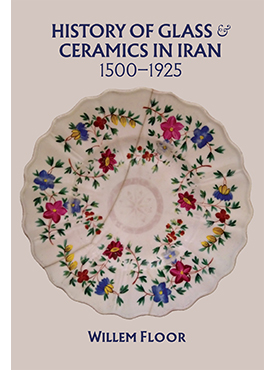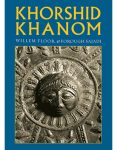About the Book
This comprehensive and richly detailed study by renowned scholar Willem Floor is the culmination of what is known about domestic glass and ceramic production-location, quality, craftsmen-in Iran from 1500 until the end of the Qajar period in 1925. Because of increasing imports, the Qajar government tried to improve domestic glass and ceramic techniques through transfer of technology, (once through direct foreign investment). The reasons for these failed attempts are discussed as well as the development of the import of glass and ceramic products. Over time, there was not only a change in the places of origin of glass and ceramic imports, but also in their volume and composition, which, during the Qajar period, included a large variety of cheap articles for mass consumption. There is an appendix for each chapter giving a market assessment for glass and ceramic production in Iran, written in French by Belgian consultants in 1891. The Belgian assessments offer a detailed chemical analysis of glass and ceramics made in Iran, as well as an inventory of the types of glassware and ceramics made by domestic craftsmen. It concludes with proposals for the establishment of a modern glass and ceramic factory in Iran.This superb body of research will not only be of great interest to Iranian scholars inside and outside the country, but also to everyone interested in the story of glass and ceramics throughout the world.
Reviews
coming soon
Contents/Excerpt
coming soon
About the Author
Willem Floor studied development economics and non-western sociology, as well as Persian, Arabic and Islamology from 1963-67 at the University of Utrecht (the Netherlands). He received his doctoral degree from the University of Leiden in 1971. Since 1983, Dr. Floor was employed by the World Bank as an energy specialist, however, after his retirement in 2002, he has dedicated his time to the study of the social and political history of Iran, and has published extensively throughout this time. His books include: Public Health in Qajar Iran, Agriculture in Qajar Iran, and The History of Theater in Iran, as well as, The Persian Gulf: A Political and Economic History of 5 Port Cities, 1500-1730, its second volume, Persian Gulf: The Rise of the Gulf Arabs, 1747-1792, third volume, The Rise and Fall of Bandar-e Lengeh, the fourth volume, Bandar Abbas: The Natural Gateway of Southeast Iran, and the fifth volume, The Persian Gulf: Links with the Hinterland Bushehr, Borazjan, Kazerun, Banu Ka’b, & Bandar Abbas, The Persian Gulf: The Hula Arabs of The Shibkuh Coast of Iran, and The Persian Gulf: Dutch-Omani Relations A Commercial & Political History 1651-1806, and The Persian Gulf: Muscat – City, Society and Trade . He has also published, Travels Through Northern Persia, 1770-1774, Titles and Emoluments in Safavid Iran, and A Social History of Sexual Relations in Iran; Labor and Industry in Iran, 1850-1941; Guilds, Merchants and Ulama in 19th Century Iran; The Rise and Fall of Nader Shah; Games Persians Play, and History of Bread in Iran. His translations include: Samuel Gottlieb Gmelin’s Travels Through Northern Persia 1770–1774 , and with Hasan Javadi, Abbas Qoli Aqa Bakikhanov’s The Heavenly Rose-Garden: A History of Shirvan & Daghestan; Evliya Chelebi’s Travels in Iran and the Caucasus, 1647 and 1654; A Man of Two Worlds: Pedros Bedik in Iran, 1670–1675, Awake: A Moslem Woman’s Rare Memoir of Her Life and Partnership with the Editor of Molla Nasreddin, the Most Influential Satirical Journal of the Caucasus and Iran, 1907–1931, and Engelbert Kaempfer: Exotic Attractions in Persia, 1684–1688: Travels & Observations.








